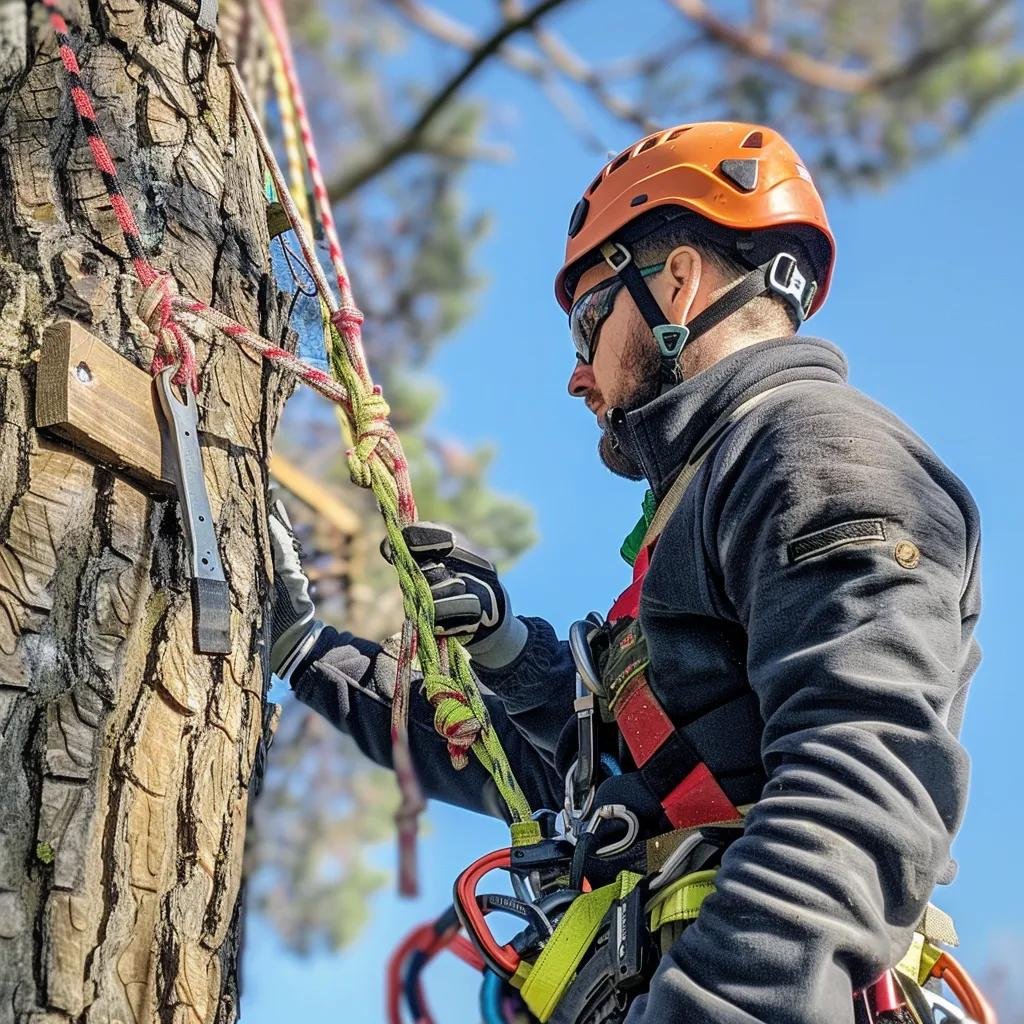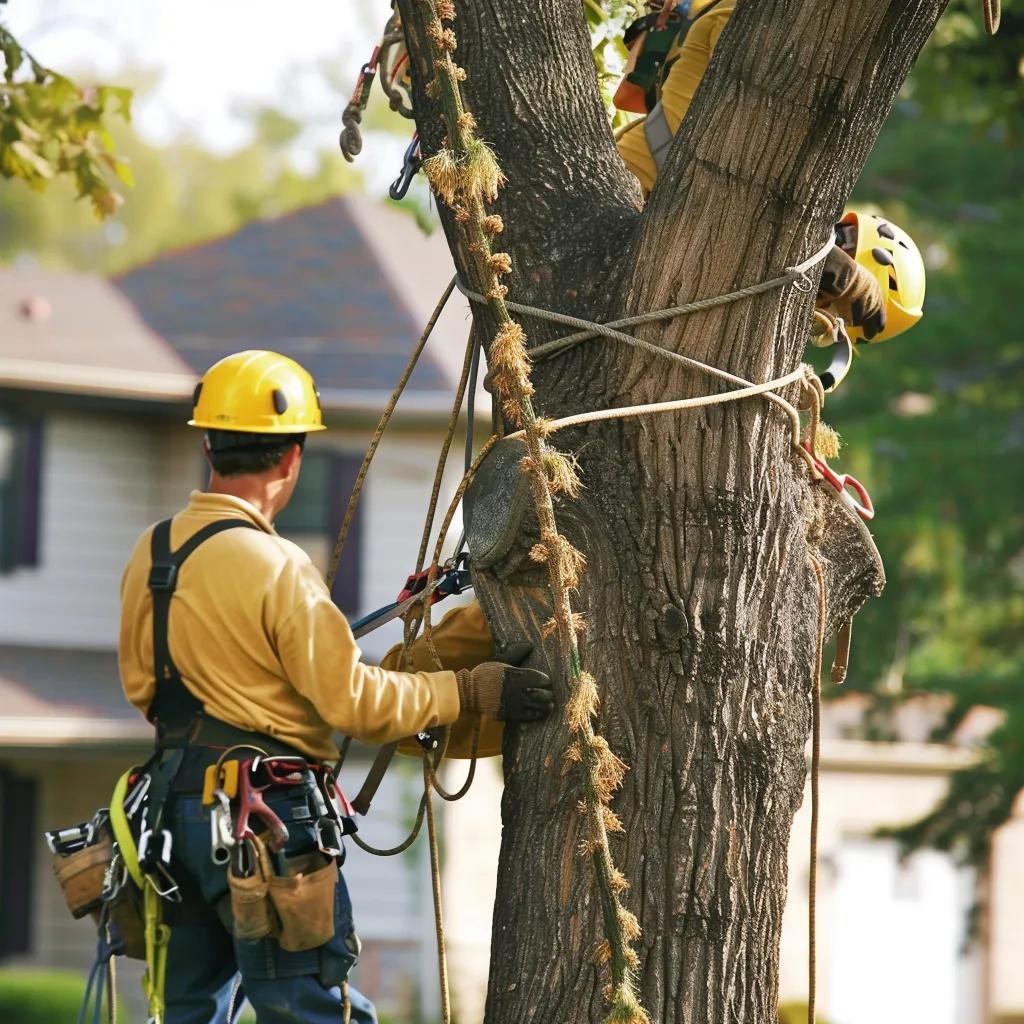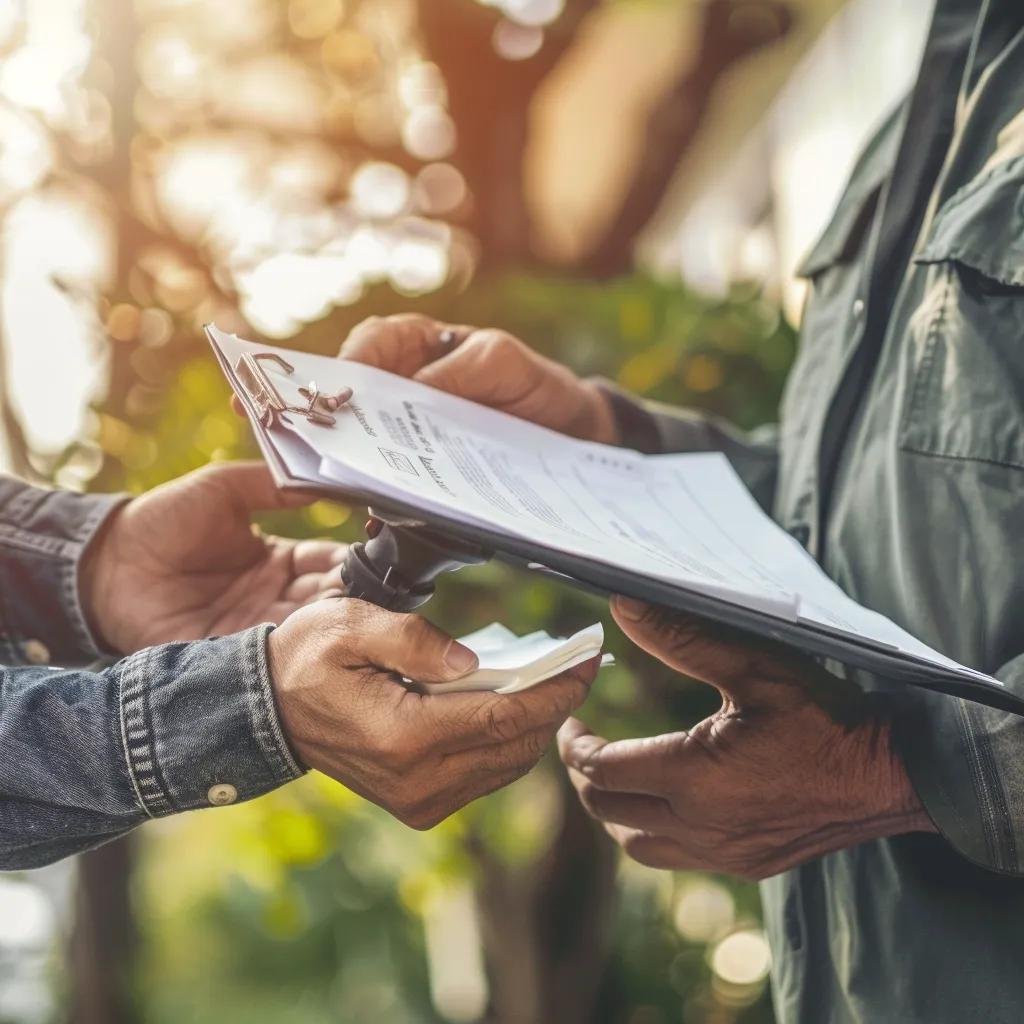
Verifying Essential Insurance Coverage for Ocala Tree Service

Verifying what insurance coverage you should look for in an Ocala tree service provider is critical to avoiding costly claims and lawsuits. Property owners face potential liability when branches fall on homes or crews get injured on site, yet many contractors operate without the proper policies. This guide explains which policies are essential, why they matter under Florida law, how to confirm validity, the role of licensing and bonding, real‐world risks of uninsured work, and how hiring a fully insured service delivers peace of mind.
What Insurance Coverage Should an Ocala Tree Service Have?
An Ocala tree service should carry core policies that transfer liability from homeowners to insurers, prevent legal exposure, and ensure project continuity. At minimum, General Liability Insurance and Worker’s Compensation must be in place, with optional coverages like Commercial Auto Insurance and Equipment Coverage enhancing protection. Reviewing these policies guarantees financial security and compliance with local regulations.
What Is General Liability Insurance and Why Is It Crucial?
General Liability Insurance covers property damage and third‐party bodily injury resulting from tree service operations, shielding homeowners from repair bills and legal claims. It functions by settling costs when falling limbs damage fences, driveways, or neighboring structures, and it reimburses medical expenses if bystanders are hurt. By carrying at least $1 million in liability limits, a tree service safeguards your financial well‐being and enforces accountability.
This foundational policy sets the stage for additional protections that further mitigate risk during tree removal and trimming projects.
How Does Worker’s Compensation Protect You and the Crew?

Worker’s Compensation Insurance provides medical benefits and wage replacement for employees injured on the job, preventing homeowners from being held personally liable for on‐site accidents. Under Florida law, this policy activates immediately when a crew member suffers a fall or equipment-related injury, covering hospital visits, physical therapy, and disability expenses. Ensuring your contractor names you as an additional insured on their policy transfers injury risks away from you.
With these core policies in place, you can focus on project details rather than potential financial liabilities.
What Other Insurance Types Might Be Relevant for Tree Services?
Beyond the essentials, Ocala tree services may carry supplementary coverages that address specialized risks. The table below outlines common policies:
| Insurance Type | Attribute | Coverage Detail |
|---|---|---|
| Commercial Auto Insurance | Vehicle Liability | Protects against accidents involving service trucks and trailers |
| Equipment and Tools Coverage | Property Coverage | Reimburses repair or replacement of chainsaws, chipper machines, lifts |
| Professional Liability | Error & Omission | Covers design or consulting mistakes when planning complex tree work |
| Pollution Liability | Environmental Protection | Addresses spills of hydraulic fluids or fuel during operations |
Supplementary policies round out a contractor’s risk management strategy and demonstrate professional responsibility.
Why Is Insurance Non-Negotiable for Ocala Tree Service Projects?
Insurance is non-negotiable because tree work involves elevated hazards—falling branches, heavy equipment, and unpredictable weather—and proper coverage transfers financial liability from homeowners to insurers. Florida’s legal requirements and the high incidence of tree care injuries make confirming policies a critical step before any project begins.
How Does General Liability Insurance Protect Your Property?
General Liability Insurance protects property owners by covering repair costs for damage to structures, vehicles, landscaping, and adjacent properties caused by tree service activities. Coverage typically includes:
- Replacement of broken fence panels, roof shingles, or window glass
- Repair of sidewalk cracks and driveway gouges from falling debris
- Reimbursement for third‐party medical bills if a neighbor or visitor is injured
By absorbing these expenses, liability insurance ensures homeowners avoid out‐of-pocket costs that can exceed tens of thousands of dollars.
This proactive protection naturally leads to understanding Florida’s worker injury requirements.
What Are the Legal Requirements for Worker’s Compensation in Florida?
Florida law mandates that any tree service employing four or more people must carry Worker’s Compensation Insurance under Section 440.02 F.S. This requirement ensures injured employees receive medical treatment and wage benefits without resorting to homeowner liability or lawsuits. Failure to comply can result in penalties, stop-work orders, and criminal charges against the contractor.
Meeting this obligation illustrates a commitment to crew safety and homeowner protection.
What Financial Risks Do Uninsured Tree Services Pose?
Hiring an uninsured tree service exposes property owners to severe financial risks, including:
- Legal judgments for property damage repair and personal injury claims
- Out-of-pocket medical and repair bills if accidents occur on your land
- Contractor abandonment without recourse if a project causes unintended harm
These liabilities can escalate rapidly, emphasizing why verifying coverage is a non‐negotiable step before contracting any tree work.
Acknowledging these dangers motivates a clear verification process for insurance credentials.
How Can Property Owners Verify a Tree Service’s Insurance in Ocala?

Property owners can verify a tree service’s insurance by requesting a Certificate of Insurance (COI), reviewing policy specifics, and directly contacting the insurer. This three‐part process confirms coverage limits, policy validity, and additional insured status, ensuring you are protected against underinsurance or lapses.
What Is a Certificate of Insurance and What Should It Include?
A Certificate of Insurance is an official document issued by an insurer that proves a contractor’s coverage. It should include:
| Entity | Attribute | Value or Detail |
|---|---|---|
| Named Insured | Policyholder Name | Contractor’s legal business name |
| Policy Number | Identifier | Unique insurance policy number |
| Coverage Types | Liability & WC | General Liability limits, Worker’s Comp info |
| Policy Period | Effective Dates | Start and expiration dates |
| Additional Insured | Coverage Extension | Homeowner or property owner designation |
Reviewing these fields establishes that the contractor maintains active, adequate policies before work commences.
What Are the Step-by-Step Actions to Verify Insurance Coverage?
- Request a current Certificate of Insurance directly from the contractor.
- Confirm the policy number matches the insurer’s records.
- Check the effective and expiration dates for continuous coverage.
- Ensure coverage limits meet project requirements (typically $1 million GL).
- Contact the insurance agent or company to validate the COI details.
This systematic approach provides conclusive proof of protection, preventing surprises if claims arise.
What Red Flags Indicate an Uninsured or Underinsured Contractor?
Watch for these warning signs of insufficient coverage:
- Refusal or delay in providing a Certificate of Insurance
- Vague or missing policy numbers and coverage limits
- Short policy periods or expired effective dates
- Exclusion of homeowners as additional insured parties
- Absence of an official insurer’s stamp or agent signature
Identification of these red flags prompts immediate clarification or selection of a fully insured provider.
With coverage confirmed, focus shifts to complementary credentials that safeguard your investment.
What Licensing, Bonding, and Safety Standards Should Ocala Tree Services Meet?
Beyond insurance, professional credentials and safety certifications validate a contractor’s qualifications, craftsmanship, and commitment to best practices. Licensing, bonding, and industry accreditations collectively create a framework for accountability and quality assurance.
Why Is Licensing Important for Ocala Tree Service Providers?
Holding a valid Florida Department of Business and Professional Regulation (DBPR) license demonstrates that a tree service meets state‐mandated education, experience, and financial stability criteria. Licensing protects consumers by ensuring contractors operate under legal oversight and adhere to standardized professional guidelines.
Meeting licensing requirements signals legitimacy and consumer confidence.
How Does Bonding Protect Property Owners?
A performance bond guarantees that the contractor will complete agreed-upon work according to contract terms, protecting homeowners if the company defaults. Bonding benefits include:
- Assurance of project completion or reimbursement
- Financial recourse for incomplete or substandard work
- Evidence of the contractor’s fiscal responsibility
Combining bonding with insurance enhances overall project security.
What Safety Certifications and Standards Should You Look For?
Certified arborist credentials and safety standards indicate advanced training and adherence to industry best practices:
- TCIA Accreditation confirms compliance with national tree care safety protocols.
- ISA Certified Arborist designation reflects mastery of arboricultural knowledge.
- OSHA compliance shows commitment to workplace safety and fall‐protection measures.
Presence of these certifications correlates with reduced accident rates and higher service quality.
Professional credentials complement insurance to create a robust risk‐mitigation strategy.
What Are Real-Life Consequences of Hiring an Uninsured Ocala Tree Service?
Uninsured tree work has produced costly outcomes for homeowners and workers alike, underscoring the importance of comprehensive coverage. Examining these cases highlights how proper policies prevent financial and legal distress.
How Can Property Damage Claims Impact Homeowners?
When falling limbs damage roofs or fences, uninsured contractors leave homeowners responsible for repair expenses that often exceed $10,000. For instance, replacing storm-broken siding and repairing gutter systems can escalate living expenses, forcing budget reallocations and insurance premium hikes.
Understanding property damage liabilities underscores the value of General Liability Insurance.
What Happens If a Worker Is Injured Without Proper Insurance?
If an uninsured crew member suffers a severe fall, homeowners may face lawsuits for medical bills, lost wages, and pain-and-suffering damages. Legal defense costs alone can top $20,000, compounding the financial burden and causing prolonged stress.
Are There Local Examples or Case Studies Highlighting These Risks?
In 2023, an Ocala homeowner was sued for $50,000 after an uninsured tree worker broke his leg on the property. The absence of valid Worker’s Compensation forced the homeowner into a protracted legal battle, covering medical costs and lawsuit fees directly.
Real‐world cases like this validate the protective power of fully insured providers.
How Does Hiring a Fully Insured Ocala Tree Service Provide Peace of Mind?
Hiring a fully insured Ocala tree service ensures that all project risks—property damage, employee injuries, and regulatory violations—are covered by specialized policies, delivering confidence and financial security to property owners throughout the job.
What Benefits Do Insured Services Offer Property Owners?
Engaging an insured contractor provides:
- Financial protection against unexpected repair and medical expenses
- Assurance of regulatory compliance with Florida insurance mandates
- Faster claim resolution through direct insurer coordination
- Evidence of professional accountability and credibility
These advantages streamline project execution and minimize homeowner exposure to liabilities.
How Can You Confirm a Tree Service’s Insurance Before Hiring?
Before signing a contract, request a current COI, verify coverage limits with the insurer, and ensure your property is listed as an additional insured. Confirm policy dates and coverage types align with project scope, and watch for any exclusions that could leave gaps in protection.
This validation process cements trust and prevents costly oversights.
Where Can You Get a Free, Insured Estimate in Ocala?
For a complimentary, fully insured tree service estimate in Ocala, visit Florida Tree Service and request a detailed project assessment. Their licensed arborists provide transparent cost breakdowns, proof of insurance, and scheduling options to suit your property needs.
Engaging an insured specialist eliminates uncertainty and starts your project on solid ground.
Hiring an insured Ocala tree service transforms potential hazards into managed risks, safeguarding your home, finances, and peace of mind. Always verify core policies—General Liability and Worker’s Compensation—before work begins and confirm additional endorsements as needed. Proper licensing, bonding, and safety certifications further enhance protection and project quality. By choosing a provider with verified insurance, you ensure a secure, professional tree care experience that puts your interests first.